Some Challenges in Causal Mediation from fMRI
Xi (Rossi) LUO
Health Science Center at Houston
School of Public Health
Dept of Biostatistics and Data Science
August 28, 2024
Funding: NIH R01MH126970, R01EB022911
fMRI Experiments
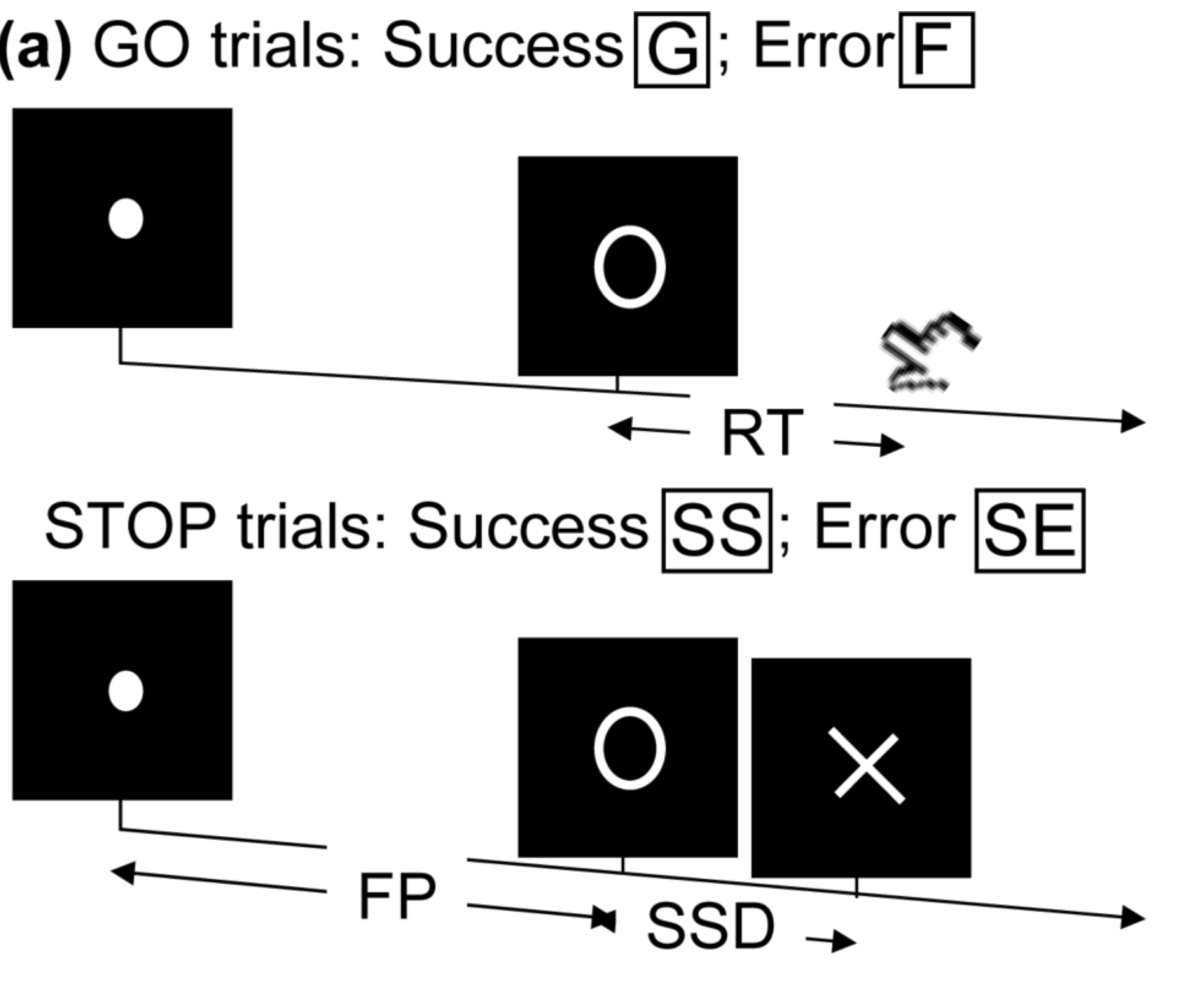
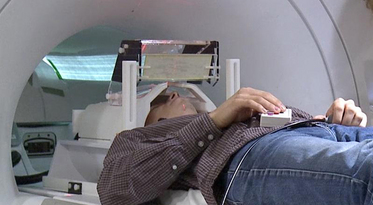
-
Task fMRI: performs tasks under brain scanning -
Randomized stop/go task:- press button if "go";
- withhold pressing if "stop"
-
Resting-state fMRI: "do nothing" during scanning
Challenging to infer causality from noisy, indirect fMRI measures
Judea Pearl wrote: in The Causal Foundations of Structural Equation Modeling
...causal effects in observational studies can only be substantiated from a combination of data anduntested theoretical assumptions,not from the data alone .
Multilevel fMRI Studies
Subject 1, Session 1
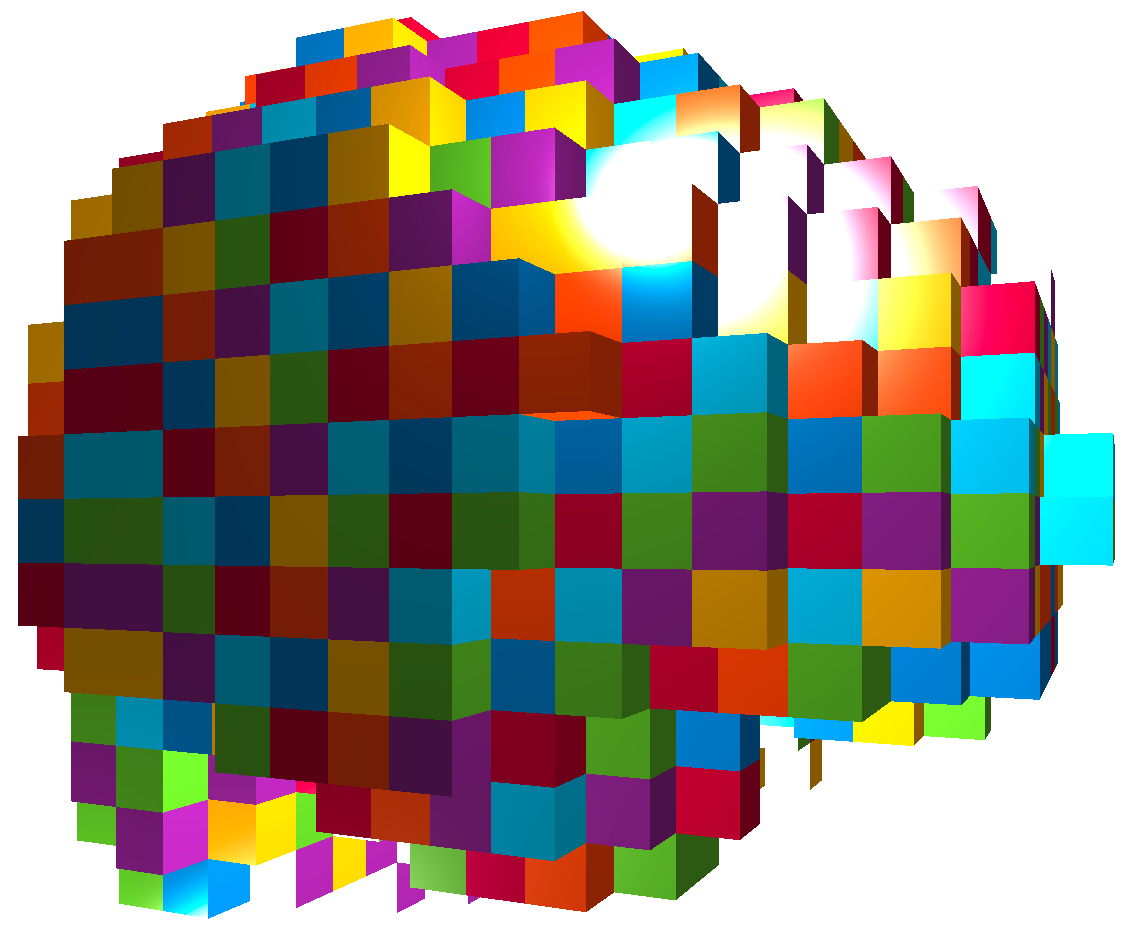
Time 1

2
…

~T
⋮
Subject i, Session j


…

⋮
Sub N, Sess K


…

Subject x Session x Time, millions of data points
Brain Mediation Model
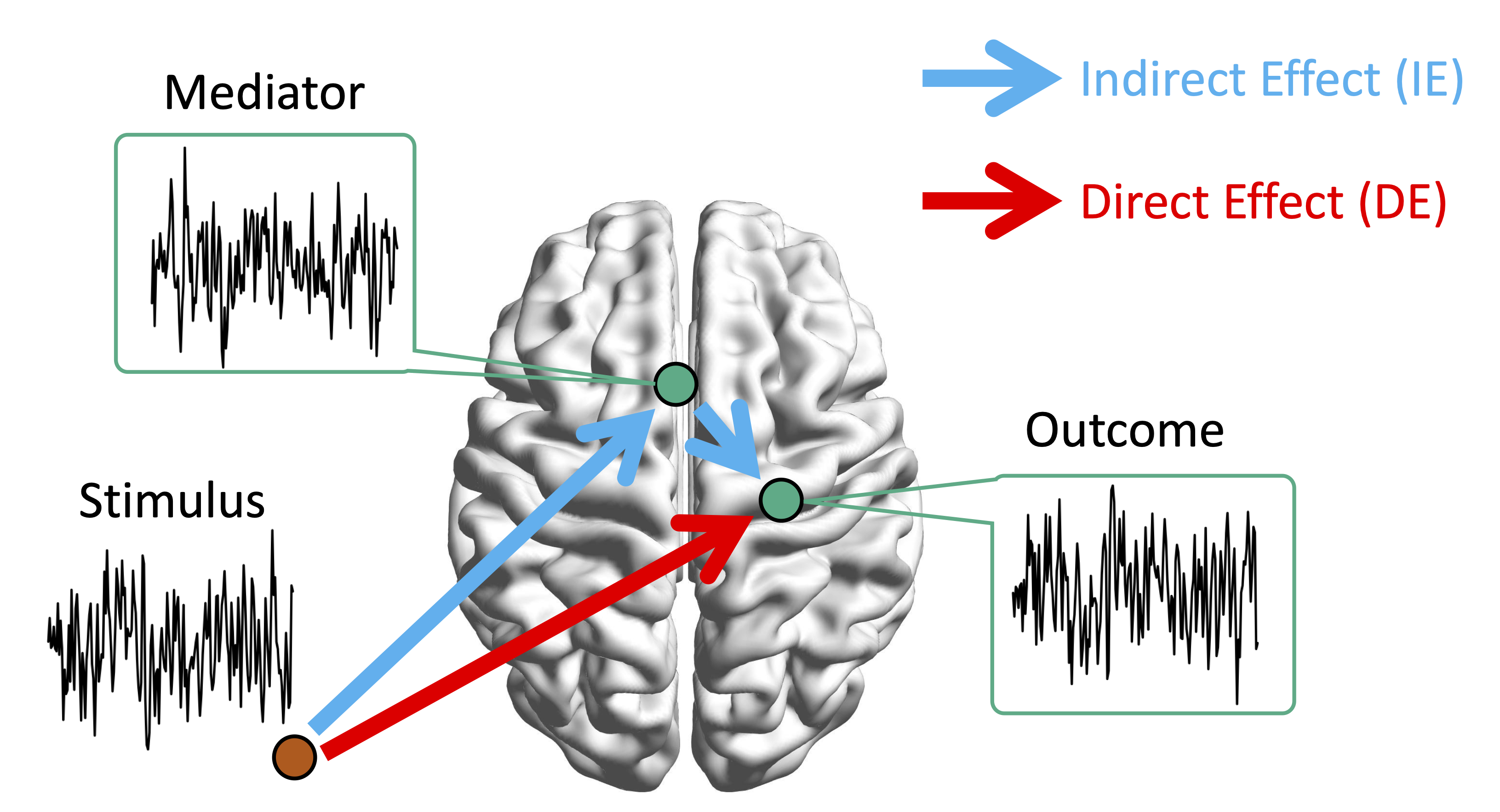
Goal: quantify the
Scalar Mediation using SEM
 $$\small \begin{align*}M &= Z a + \overbrace{U + \epsilon_1}^{E_1}\qquad R = Z c + M b + \underbrace{U g + \epsilon_2}_{E_2}, \quad \epsilon_1 \bot
\epsilon_2\end{align*}$$
$$\small \begin{align*}M &= Z a + \overbrace{U + \epsilon_1}^{E_1}\qquad R = Z c + M b + \underbrace{U g + \epsilon_2}_{E_2}, \quad \epsilon_1 \bot
\epsilon_2\end{align*}$$
-
Indirect effect: $a \times b$; Direct effect: $c$ -
Untestable assumption: $\delta=cor(E_1, E_2) =0 $, no confounders Baron&Kenny, 86; Sobel, 82; Holland 88; Preacher&Hayes 08; Imai et al, 10; VanderWeele, 15; Lindquist, 12 ...
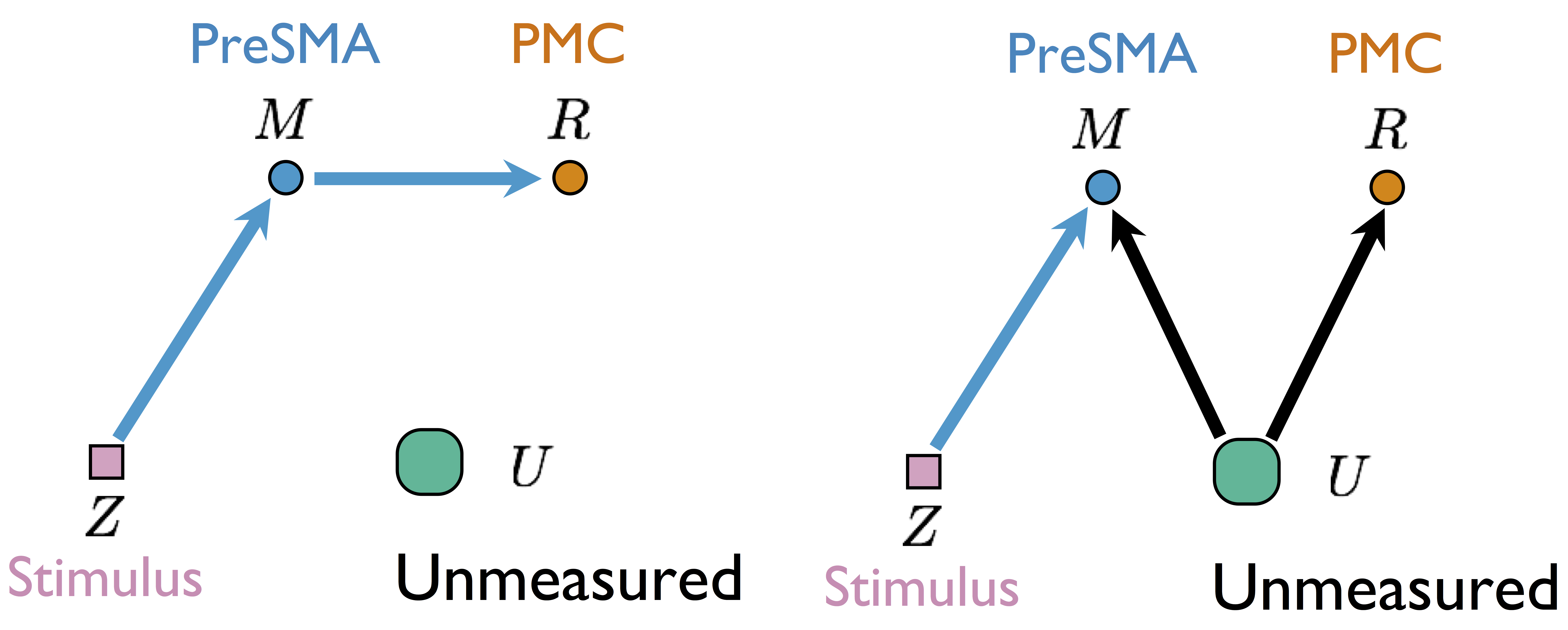
We first prove two different models generate same single-trial BOLD activations if only observing $Z$, $M$, and $R$
without measuring $U$Multilevel Mediation Zhao and Luo, 2023
- We optimize the joint likelihood of all multilevel mediation data, allowing $\delta \ne 0$
- We prove a unique solution and consistent estimation for $\delta$.
- From data alone, we estimate the causal effects,
without the untestable assumption of no unmeasured confounding. - Large fMRI data is helpful for resolving causality
Model Identifiability and Bias
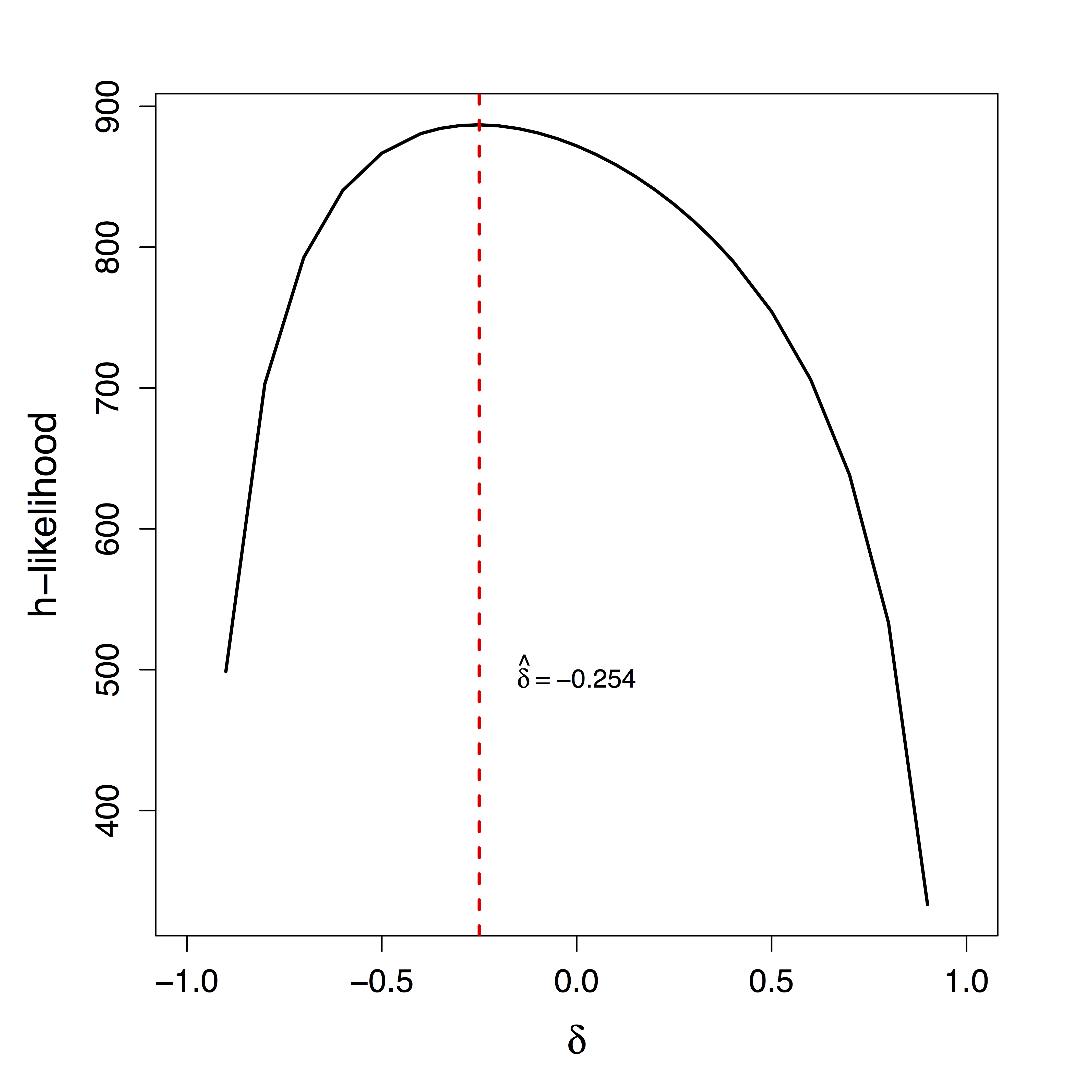
Unique $\delta$ for ML
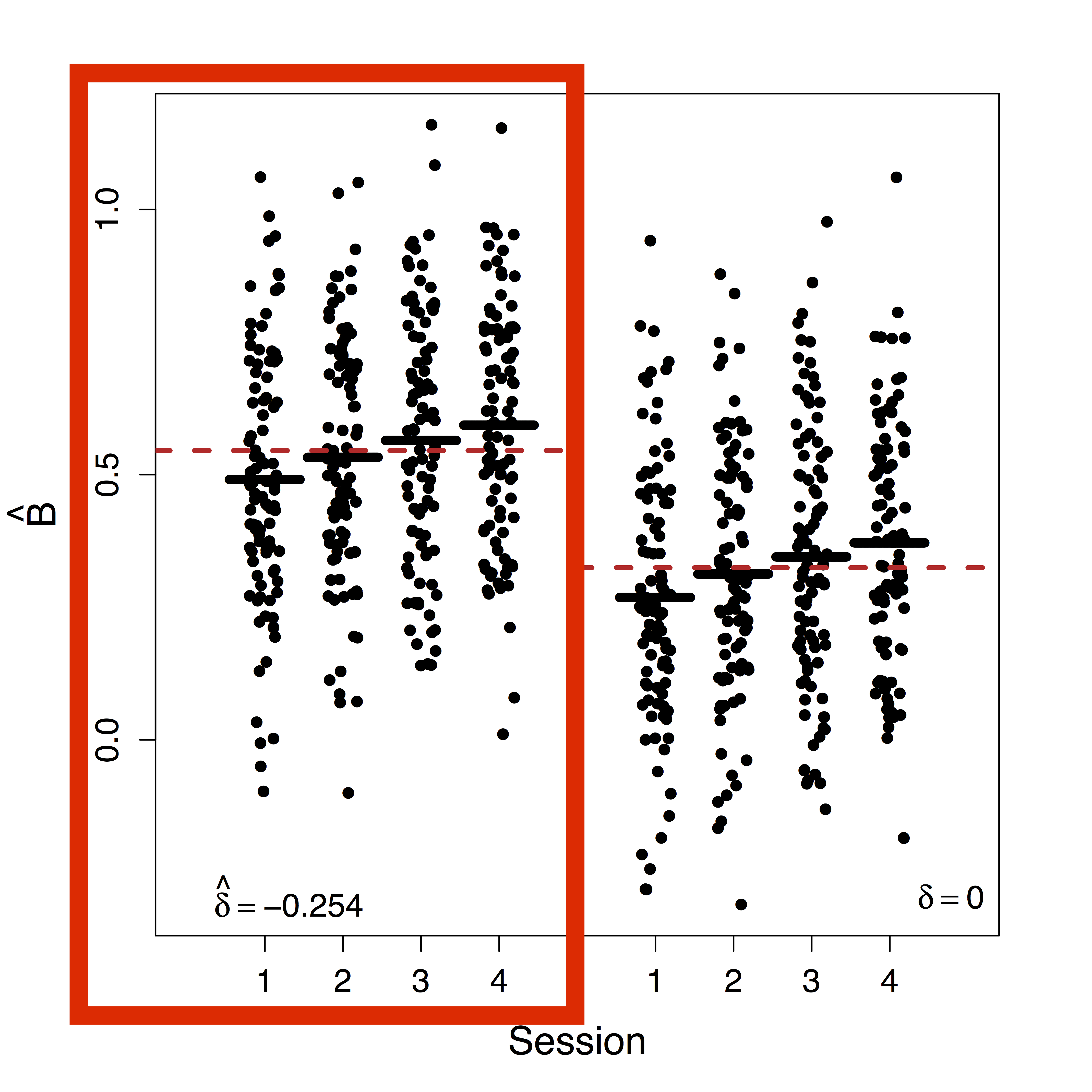
Effects doubled
Causal effects in fMRI actually larger after removing unmeasured confounding
Granger Mediation Zhao and Luo, 2019
- We build multilevel,
time series mediation model, based on Granger causality or VAR - A spatial-temporal model for brain pathways
- We specify additional causal assumptions
- We prove asymptotic convergence rates
Granger Mediation Model
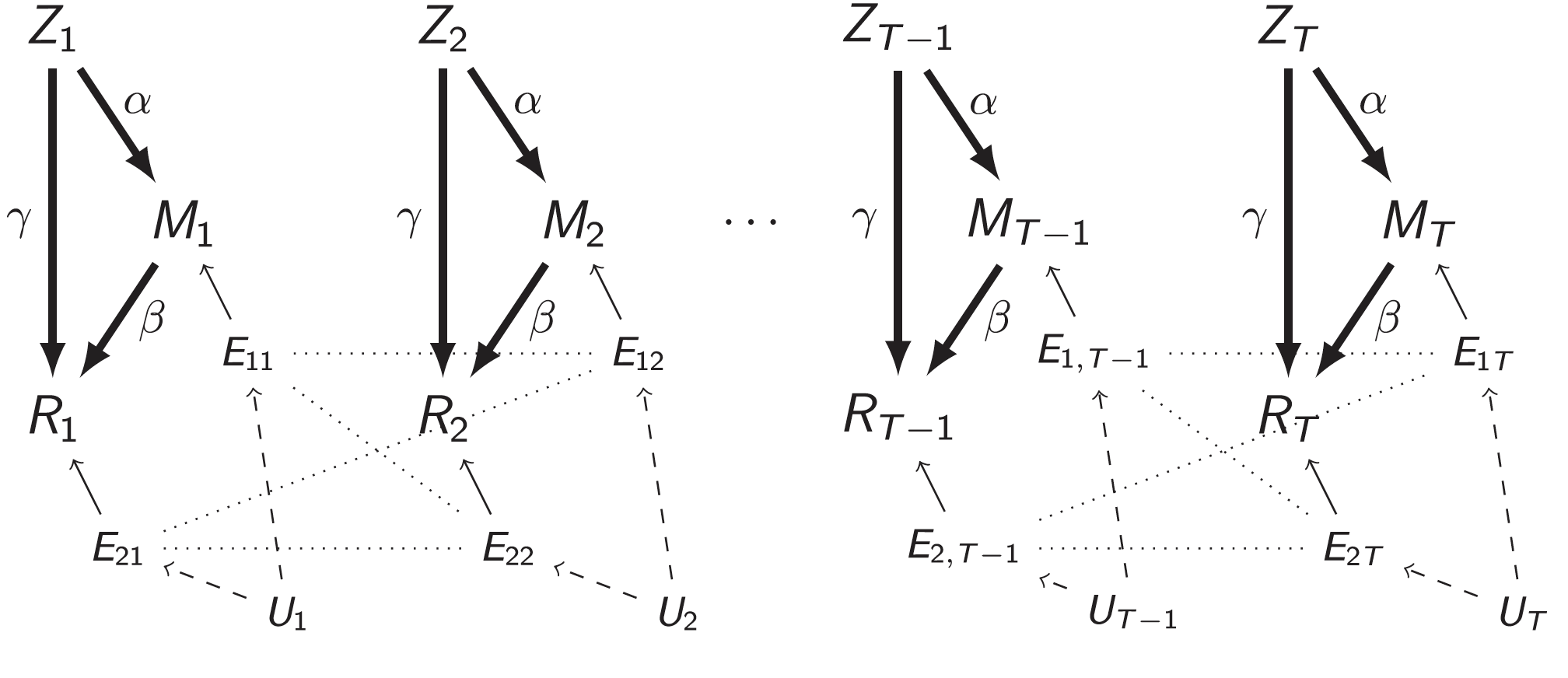
→ Time
Simulations Match Theory
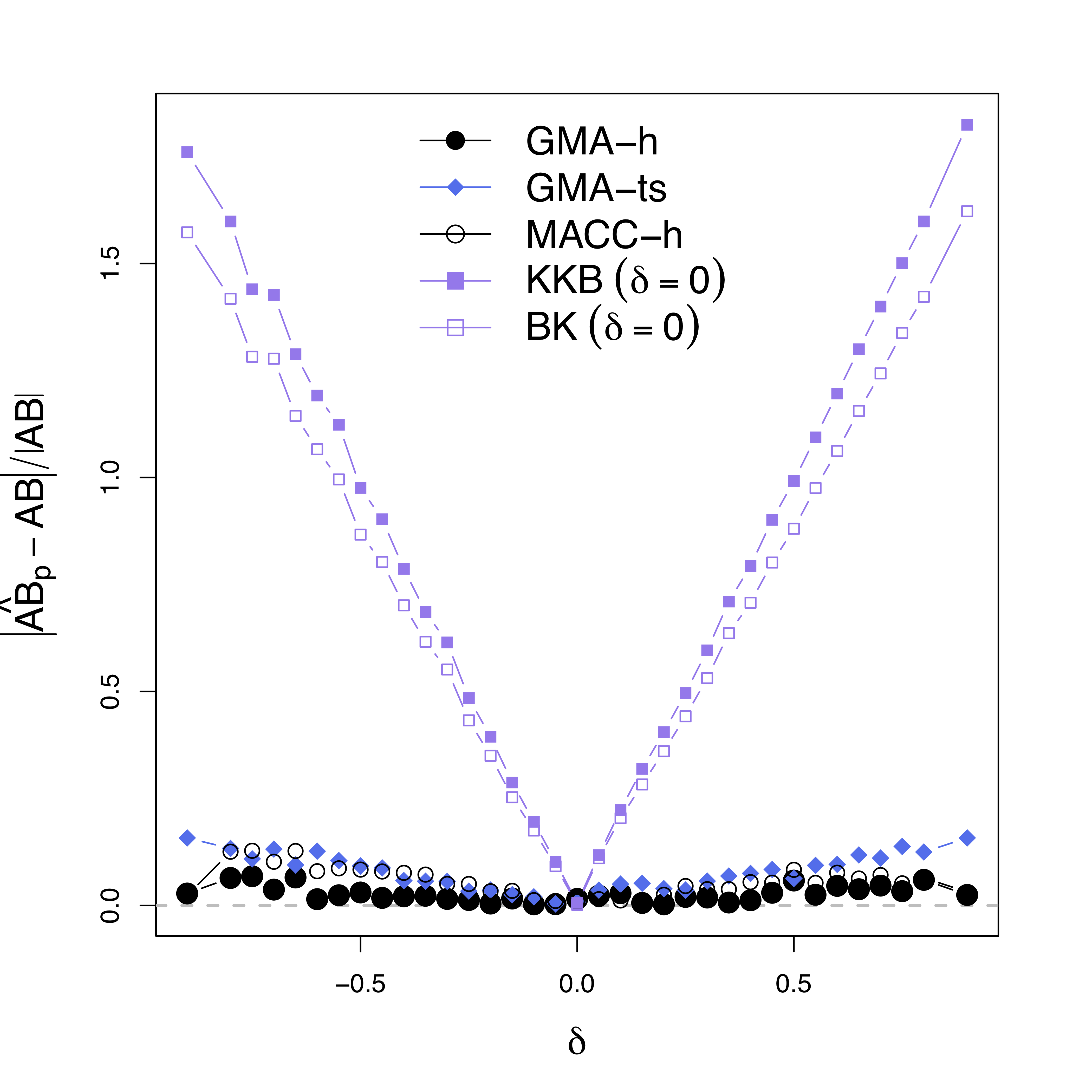
Low bias for $AB$
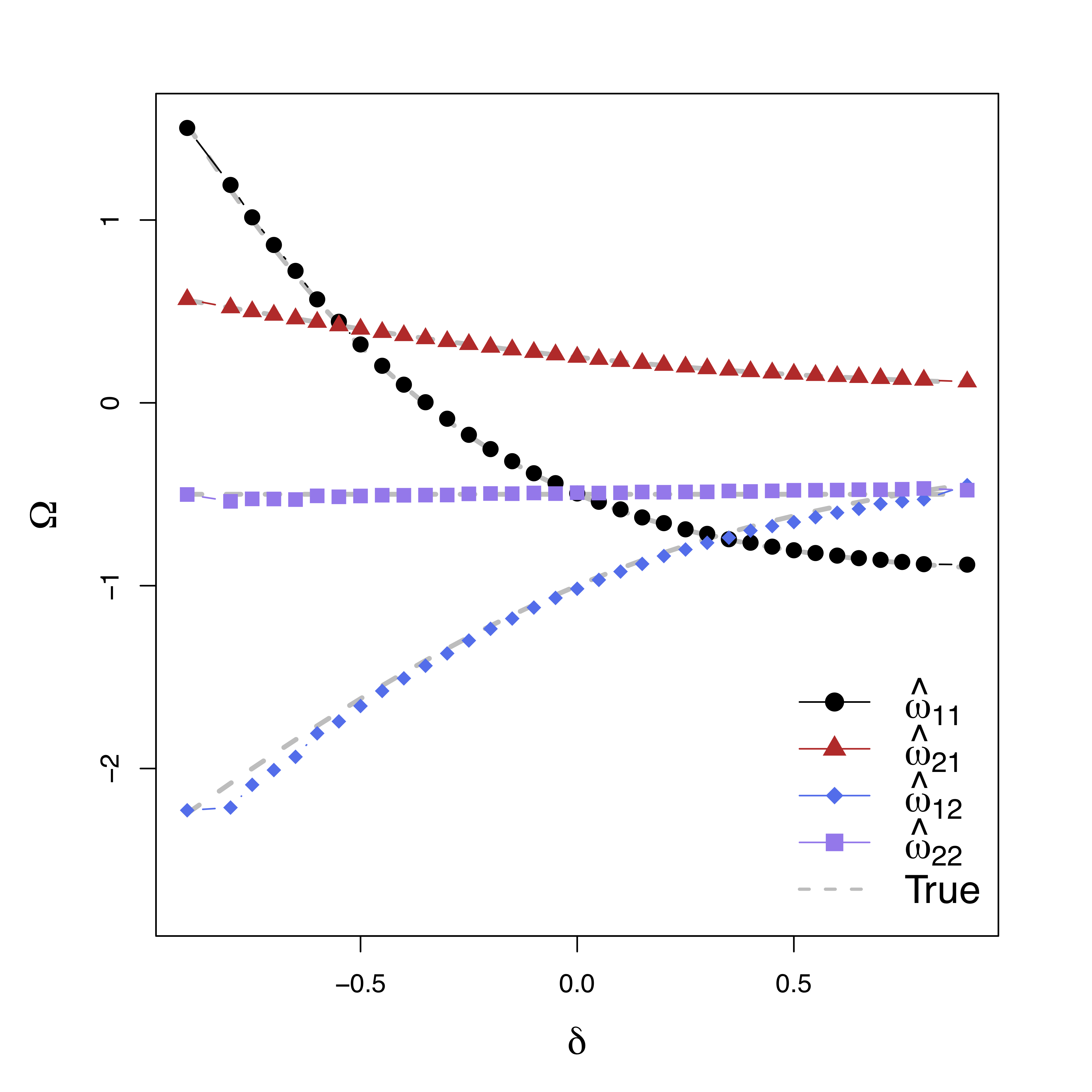
Low bias for temporal cor
Gray dash lines are the truth
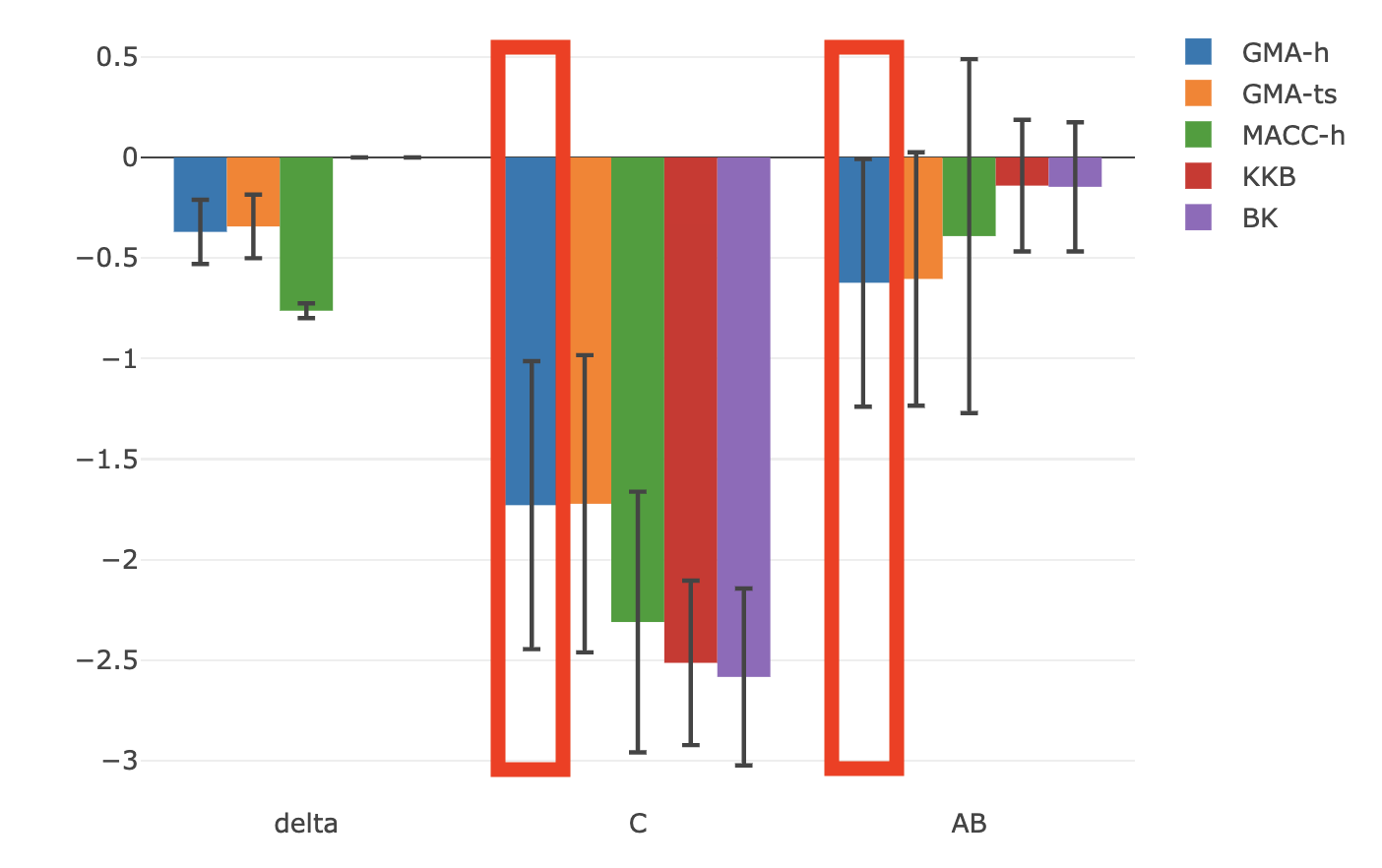
- Stronger indirect pathways while other methods under-estimate the effects/ratios
- Help resolve the debates among neuroscientists
- Novel feedback findings: M1 → preSMA after lag 1 and 2 (not shown)
Functional Mediation Zhao, Luo, Sobel, Lindquist, Caffo, arXiv
- We treat all variables as functional data
- We identify the causal assumptions necessary for causal interpretation
- Improved understanding of dynamic mediation effects and interpretation
Historical Model: Direct and Indirect Effects
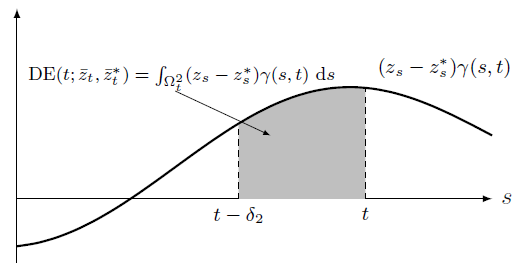
Direct Effect
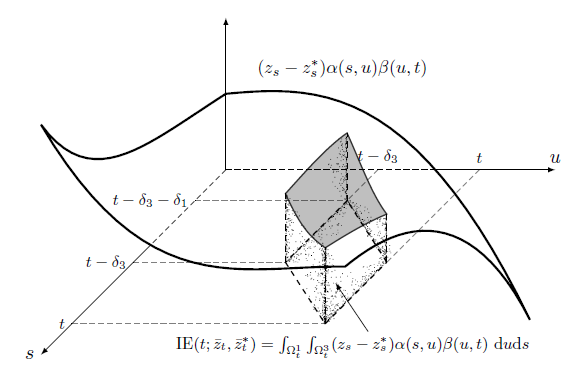
Indirect Effect
Causal effects are 1D/2D integration of the shaded
Causal SEMs: Historical Model
$$ \scriptsize \begin{align} M_{t}(\bar{z}_{t}) =& \iota_{1}(t)+ \int_{\Omega_{t}^{1}}z_{s}\alpha(s,t)~\mathrm{d}s+\varepsilon_{1t}(\bar{z}_{t}), \label{eq:CHM_M} \\ Y_{t}(\bar{z}_{t},\bar{m}_{t}) =& \iota_{2}(t) + \int_{\Omega_{t}^{2}}z_{s}\gamma(s,t)~\mathrm{d}s \\ & +\int_{\Omega_{t}^{3}}m_{s}\beta(s,t)~\mathrm{d}s+\varepsilon_{2t}(\bar{z}_{t},\bar{m}_{t}) \label{eq:CHM_Y} \end{align} $$Simulation Comparison
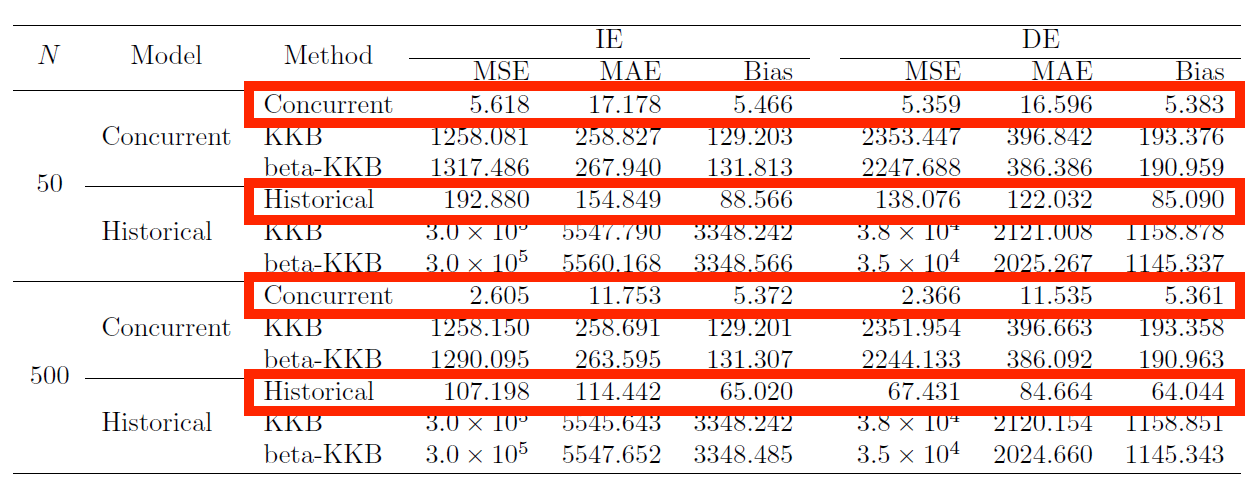
Challenging for scalar mediation methods to capture functional causal effects
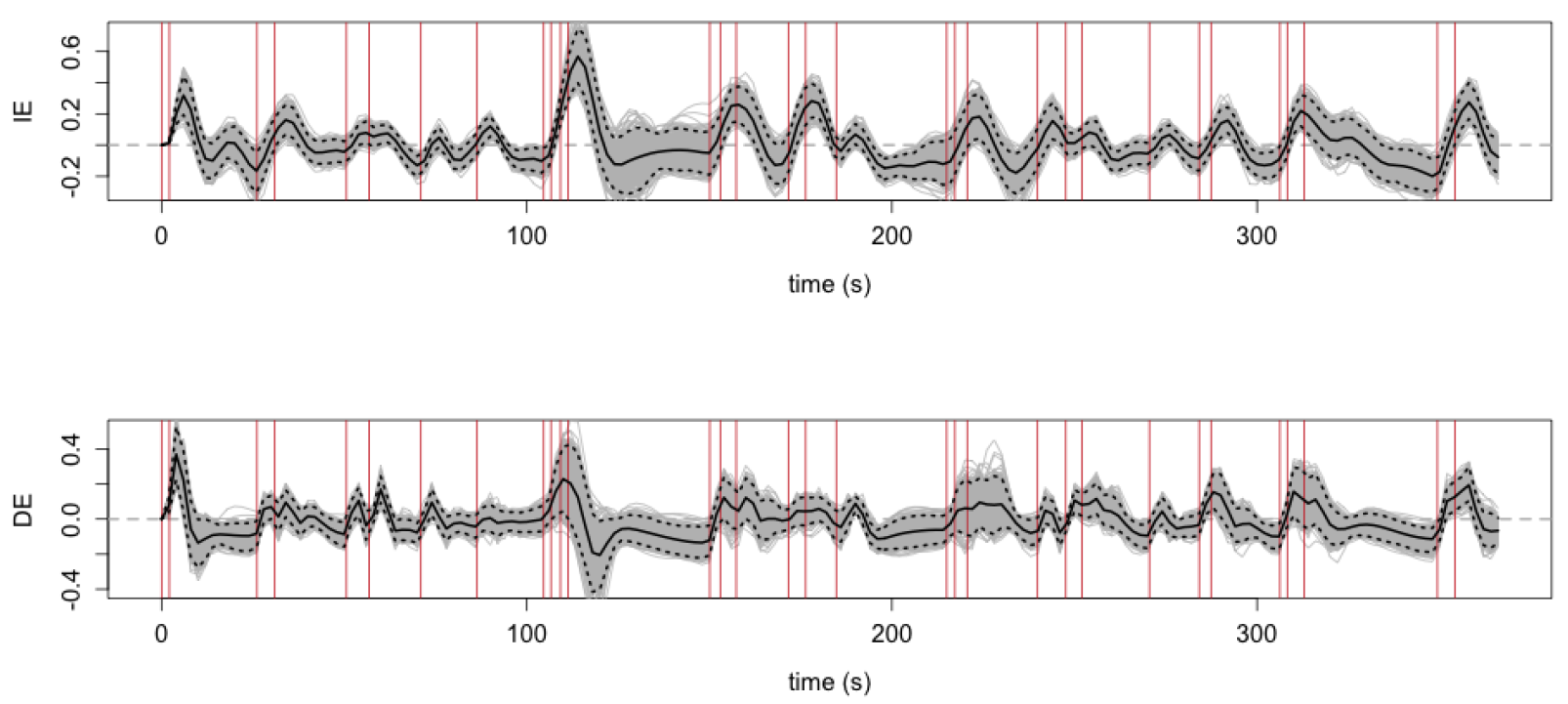
Brain mediation effects are dynamic depending on stimulus patterns and history
High Dim Mediation Zhao and Luo, 2022
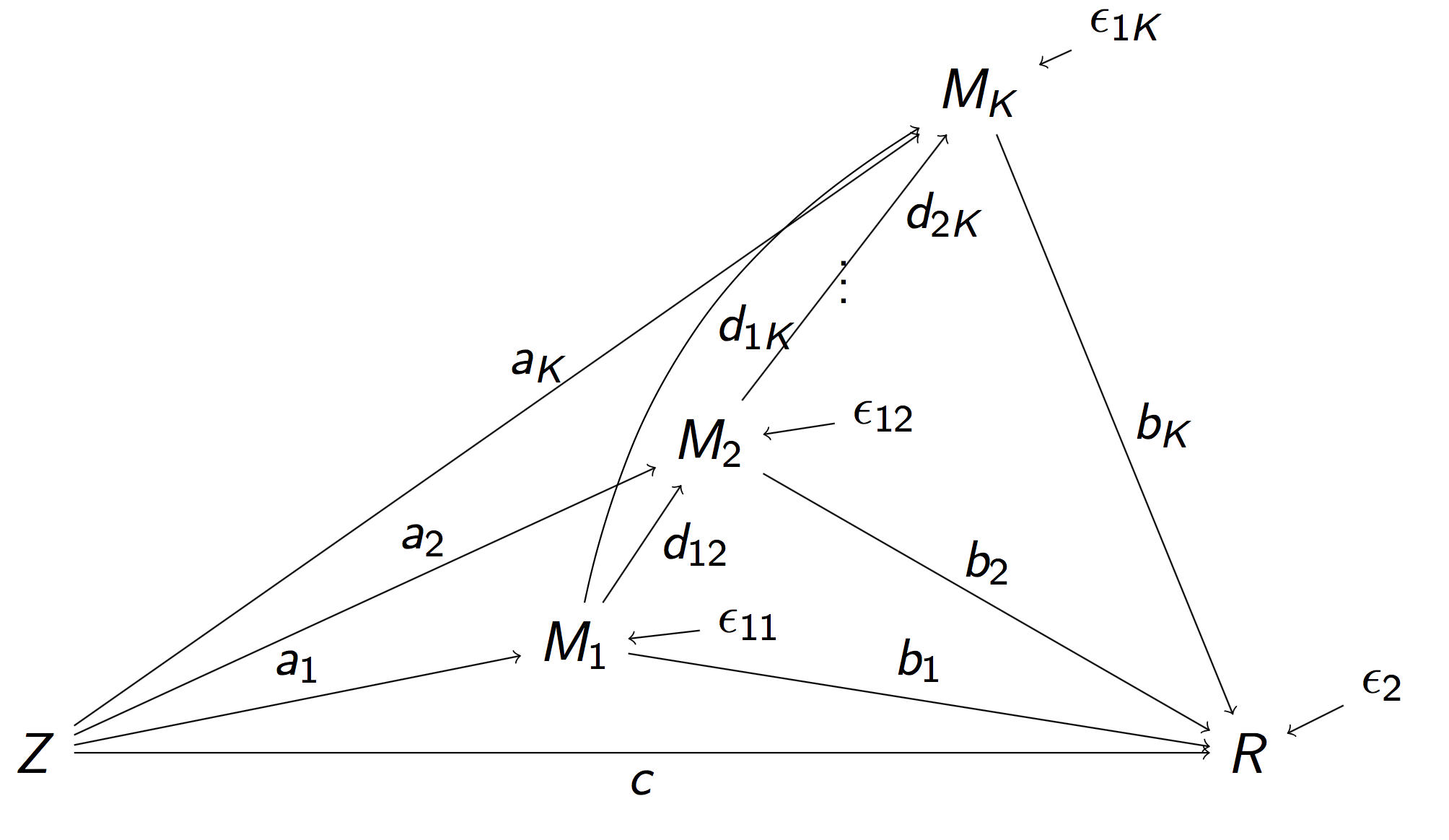
Full Model
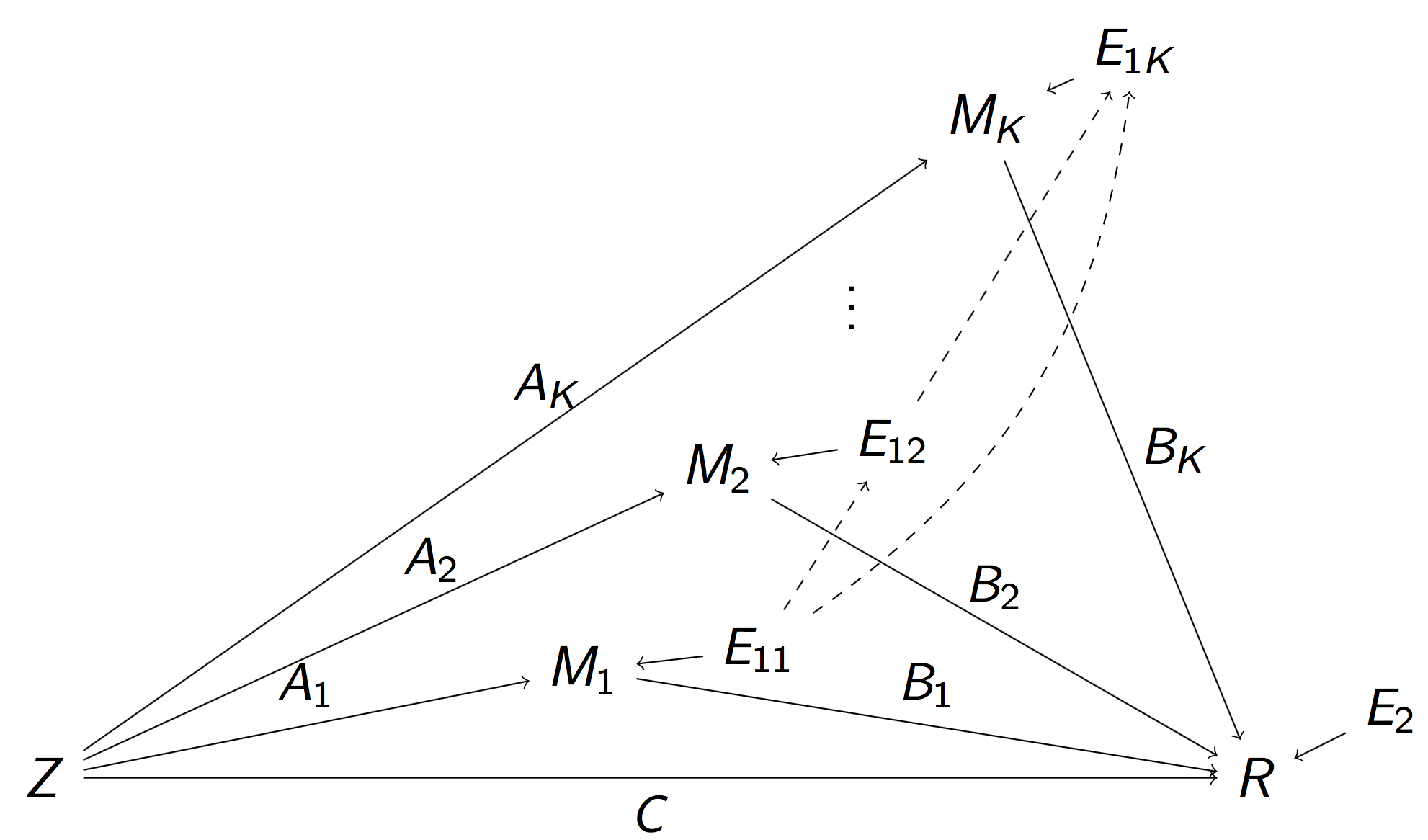
Reduced Model
Pathway Lasso penalty:
$$ \scriptsize \mbox{Pen}(A, B) = \lambda \sum_{k=1}^K ( |A_k B_k| + \phi A_k^2 + \phi B_k^2) $$
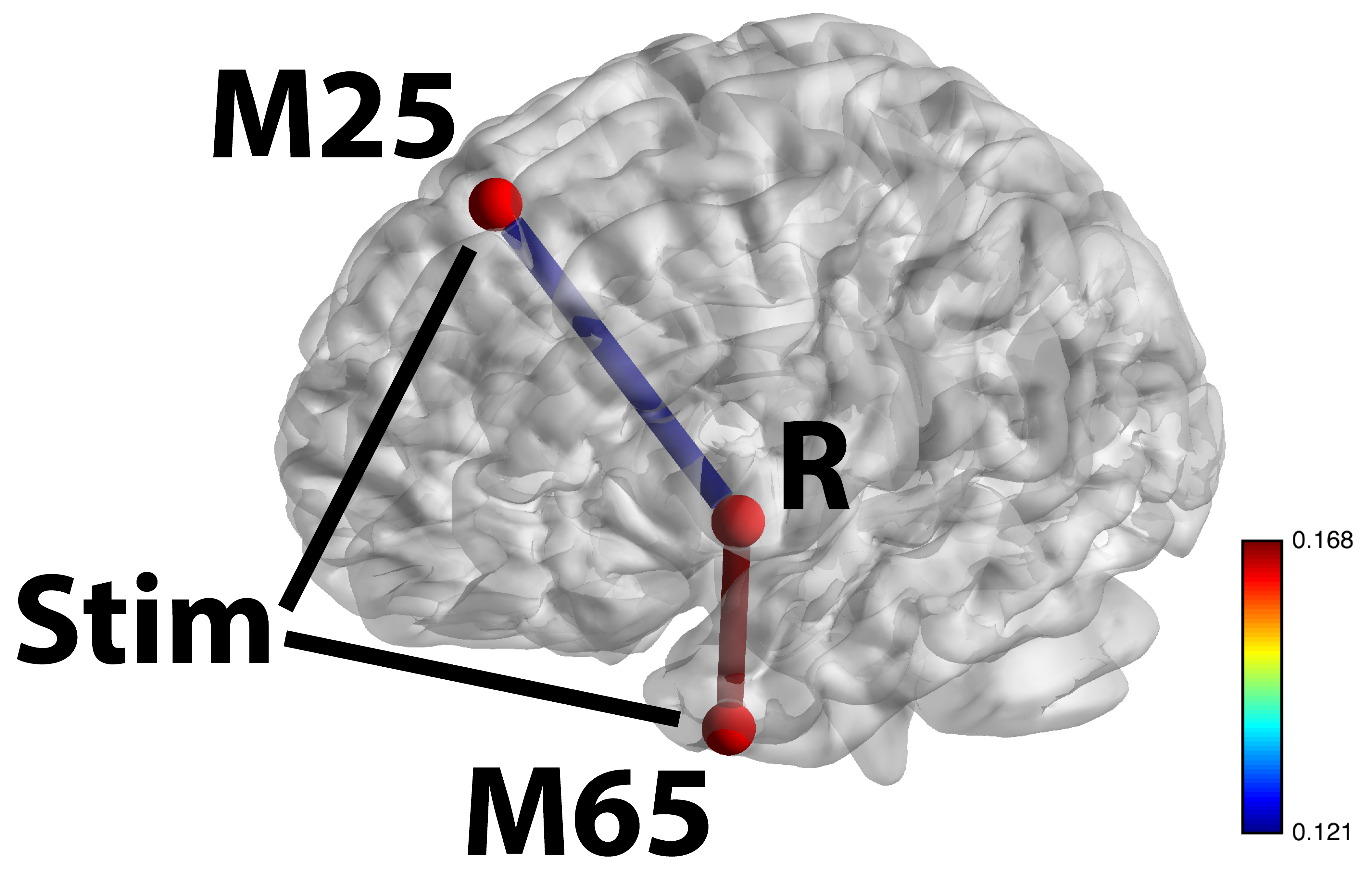
Stim-M25-R and Stim-M65-R significant shown largest weight areas
- M65 responsible for language processing, larger flow under story
- M25 responsible for uncertainty, larger flow under math
Summary
- Causal mediation analysis for fMRI can improve effect estimates
- Multilevel and large-scale models help resolve causality (a bit), under varying statistical and causal assumptions
- Mediation can be useful for understanding brain pathways and information processing
- R packages available:
macc ,gma ,cfma and references within
Collaborators

Yi Zhao
Indiana Univ
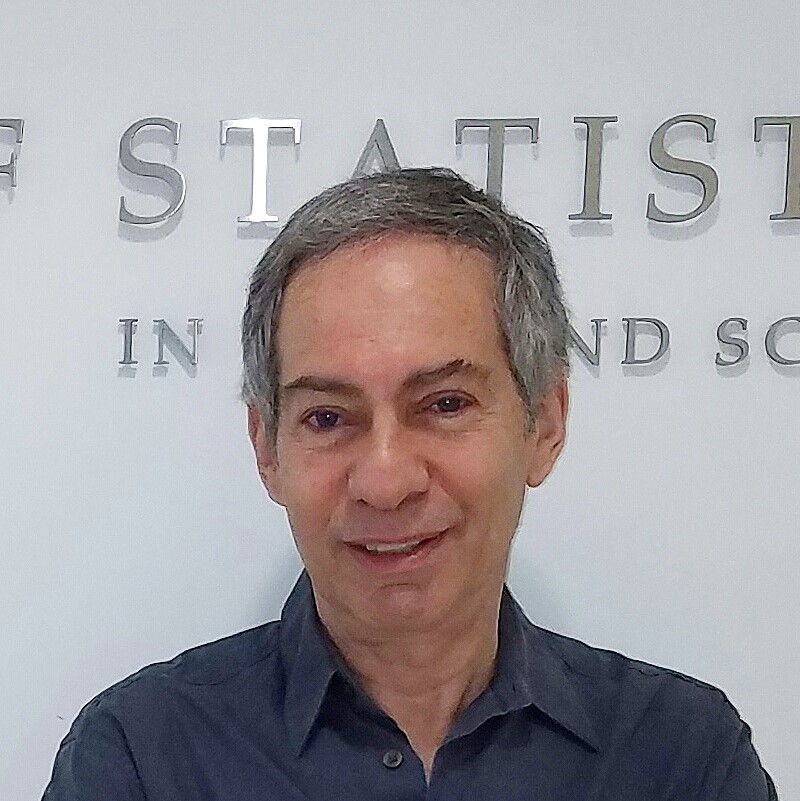
Michael Sobel
Columbia Univ

Johns Hopkins Univ

Brian Caffo
Johns Hopkins Univ
Important Questions
- Important research problems?
- Validation, large-scale joint causal models, directionality, to bedside
- How to improve the processing and sharing of datasets?
- Benchmark datasets
- How to make statistical methods more impactful?
- Integration with the ecosystem, case studies, scientific meetings